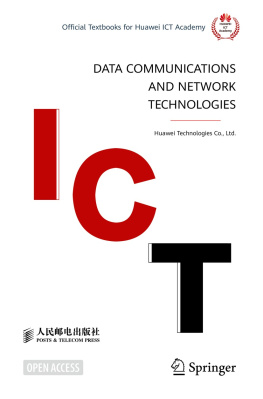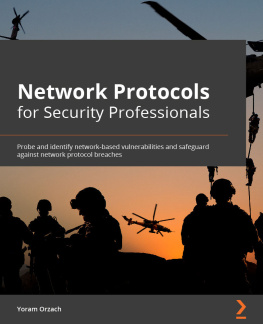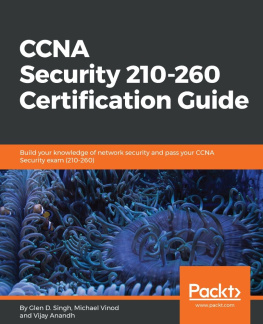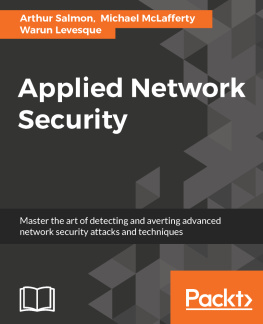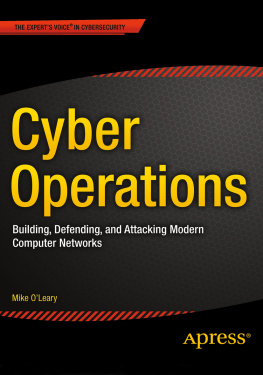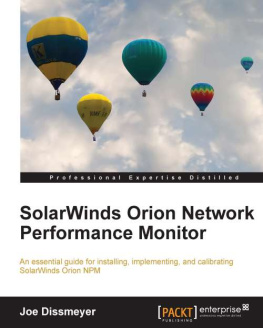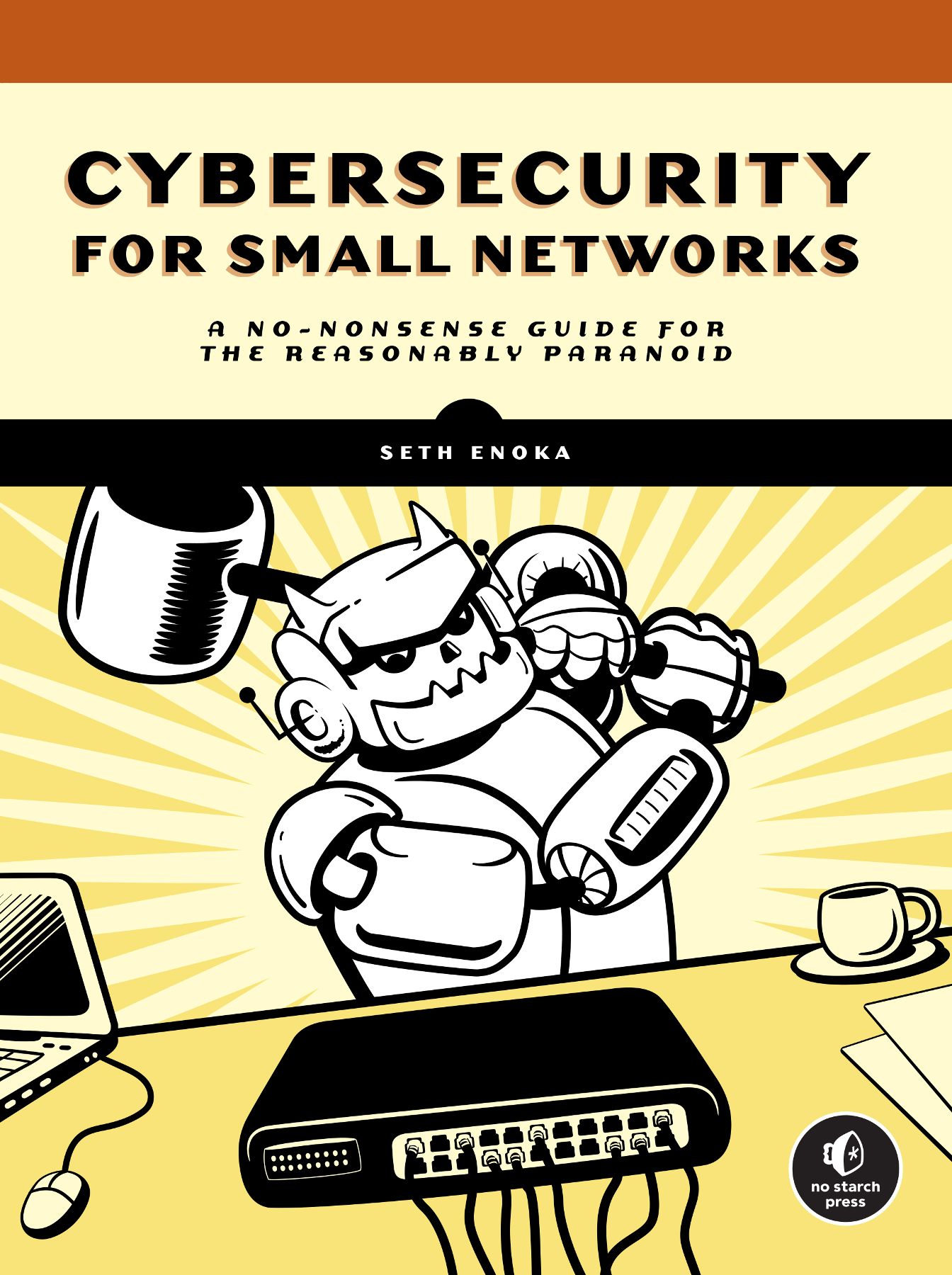Cybersecurity for Small Networks
A No-Nonsense Guide for the Reasonably Paranoid
by Seth Enoka

San Francisco
CYBERSECURITY FOR SMALL NETWORKS. Copyright 2023 by Seth Enoka.
All rights reserved. No part of this work may be reproduced or transmitted in any form or by any means, electronic or mechanical, including photocopying, recording, or by any information storage or retrieval system, without the prior written permission of the copyright owner and the publisher.
First printing
26 25 24 23 22 1 2 3 4 5
ISBN-13: 978-1-7185-0148-5 (print)
ISBN-13: 978-1-7185-0149-2 (ebook)
Publisher: William Pollock
Managing Editor: Jill Franklin
Production Editors: Paula Williamson and Katrina Horlbeck Olsen
Developmental Editors: Jill Franklin and Eva Morrow
Cover Illustrator: Gina Redman
Interior Design: Octopod Studios
Technical Reviewer: Kyle Rankin
Copyeditor: Kim Wimpsett
Compositor: Scribe Inc.
Proofreader: Scribe Inc.
Indexer: BIM Creatives, LLC
For information on distribution, bulk sales, corporate sales, or translations, please contact No Starch Press, Inc. directly at or:
No Starch Press, Inc.
245 8th Street, San Francisco, CA 94103
phone: 1.415.863.9900
www.nostarch.com
Library of Congress Cataloging-in-Publication Data
Names: Enoka, Seth, author.
Title: Cybersecurity for small networks / by Seth Enoka.
Description: San Francisco, CA : No Starch Press, Inc., [2022] | Includes index.
Identifiers: LCCN 2022021005 (print) | LCCN 2022021006 (ebook) | ISBN 9781718501485 (print) | ISBN 9781718501492 (ebook)
Subjects: LCSH: Local area networks (Computer networks)Security measures.
Classification: LCC TK5105.7 .E56 2022 (print) | LCC TK5105.7 (ebook) | DDC 004.6/8dc23/eng/20220707
LC record available at https://lccn.loc.gov/2022021005
LC ebook record available at https://lccn.loc.gov/2022021006
No Starch Press and the No Starch Press logo are registered trademarks of No Starch Press, Inc. Other product and company names mentioned herein may be the trademarks of their respective owners. Rather than use a trademark symbol with every occurrence of a trademarked name, we are using the names only in an editorial fashion and to the benefit of the trademark owner, with no intention of infringement of the trademark.
The information in this book is distributed on an As Is basis, without warranty. While every precaution has been taken in the preparation of this work, neither the author nor No Starch Press, Inc. shall have any liability to any person or entity with respect to any loss or damage caused or alleged to be caused directly or indirectly by the information contained in it.
To my darling wife, without whom I would surely be unable to do all the things
About the Author
Seth Enoka is an IT and cybersecurity veteran, having worked on large and complex cybersecurity incidents and investigations all over the world. When hes not helping organizations kick and keep adversaries out of their networks, you can find him teaching digital forensics and incident response, mentoring and being mentored by others in the security community, working through some degree or certification, or preparing for his next powerlifting competition (whenever that might be...).
About the Technical Reviewer
Kyle Rankin is the chief security officer at Purism and the author of Linux Hardening in Hostile Networks and DevOps Troubleshooting, among other books. Rankin was an award-winning columnist for Linux Journal. He speaks frequently on open source software and has given keynotes at SCALE and FOSDEM.
Brief Contents
Contents in Detail
There are altogether too many individuals I should thank, and Im all too likely to leave out an important name or two, so Id like to acknowledge the cybersecurity community as a whole. Thank you for being as open and generous with your time and expertise as I aspire to be.

This book is an introduction to cybersecurity, written to help system and network administrators and owners understand the fundamentals of securing a network. Your personal cybersecurity is critical in protecting yourself from fraud and other harmful events attempted by adversaries. Its easy to tell yourself that you cant be a target, that you have nothing an adversary would want to use or exploit. However, your personal identifiable information (PII), protected health information (PHI), intellectual property, and government information and identification all have value. Failing to protect those things can lead to consequences such as identify theft, which can have a serious impact on your life.
For our purposes, a small network consists of 100 or fewer endpoints. An endpoint, or host, is any system or device that connects to or is part of a network, such as a desktop or laptop computer or a mobile device like a phone or tablet. Larger networks, approaching the size of an enterprise network, use similar tools and techniques that are covered in this book to provide security to their users and systems, just on a much larger scale and often at a much higher cost.
The drawback to securing small networks is that you have to maintain and administer everything yourself, with limited support and likely a limited budget. Securing your network will require constant care, and well cover some ways that you can do this cheaply when the need arises. Ultimately, the goal of this book is to arm you with the tools and knowledge to secure your network with whatever resources you have available, in terms of both time and money.
This book is written so that if you follow it logically from chapter to chapter, youll progress through several levels of security maturity, ending with a network that has a defense-in-depth architecture. Defense-in-depth is an approach to cybersecurity where several defensive solutions are layered to protect valuable data and information. focus on the value of regular backups and active defenses, whereby you receive and respond to alerts to suspicious or malicious activity in your network, enabling cyber incident response.
Most chapters contain stand-alone projects. You can choose to complete each project in order, or you can pick and choose which projects you want to complete. However, the concepts covered in earlier chapters on network architecture provide the best return on investment, in terms of both time and money, and require less ongoing support and maintenance. The later chapters that cover active defenses require constant monitoring and are made more efficient with the completion of earlier projects. In some cases, working through the projects in earlier chapters also provides baseline knowledge that may be useful in later projects, such as familiarity with the command line. Essentially, you should complete each chapter in whichever order makes the most sense for you and your environment; for example, if you already have host and network firewalls in place, you can probably skip .


